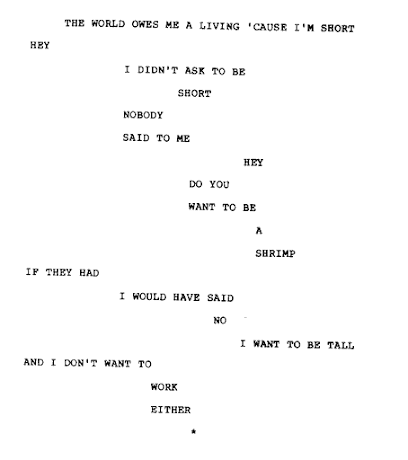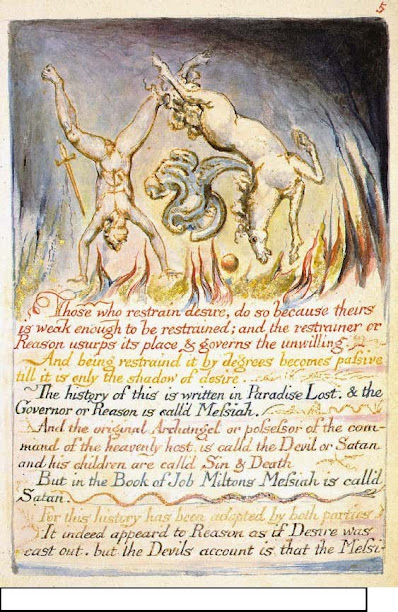LIBERATURA! RADOSLAW NOWAKOWSKI! KATARZYNA BAZARNIK & ZENON FAJFER
1. RADOSLAW NOWAKOWSKI
One of the members of the Liberature Movement. Artist, writer and musician.
He produces hand-made books. Often in limited edition and slightly different from one another due to the way they are put together with Japanese stab binding. His books are simplistic in design, yet experimental in layouts and typography inside.
Some of his books are turned into large installations exploring forms book can take.
Set up in industrial or museum spaces.
He also works digitally, producing hypertext narratives.
I'm mainly interested in his analogue approach to bookmaking. They take on many forms, Sometimes quite unconventional.
HASA RAPASA (liberatorium.com) [Accessed 20.01.21]
2. KATARZYNA BAZARNIK & ZENON FAJFER
The couple initiated the idea for the Liberature Movement in the '90s.
Their books are characterised by unusual constructions and abstract narratives.
One of the best examples is 'OKA LECZENIE' (2000).
Unfortunately, there doesn't seem to be an English subtitled version.
Katarzyna Bazarnik and Zenon Fajfer talk about their book collections and inspiration for Liberature.
'Oka leczenie' is written with visible and invisible language, literal and metaphorical. The language that turns into images.
This type of book needs to be read in a different way. Everything has its meaning and meaning is in everything.
This type of thinking in literature in general has a rich tradition.
Zenon Fajfer and Katarzyna Bazarnik/ Liberature – CENTRAL BOOKING (centralbookingnyc.com) [Accessed 20.01.21]
3. WHAT IS LIBERATURA?
LIBERATURE'S INSPIRATIONS
"I AIMED AT TOTAL WORK, TOTAL LITERATURE, LITERATURE SPEAKING NOT WORDS ONLY, BUT OF THE ENTIRE BOOK, THE SHAPE OF THE LETTERS AND THE SPACES BETWEEN THEM." - ZENON FAJFER
Liberatura (slideshare.net) [Accessed on 27.01.21]
My research here is based on www.liberatura.pl website.
It's a new literary genre, literary movement, integrating text/ textual forms/ textual expressions within the material form of the book. It was formed in Poland in the late 1990s.
The functions of LIBERATURA are mainly semantic than aesthetic. The text is the overriding and necessary element - concept, from which all the other functions are built upon. However, the text can be presented through various means of expressions, creating and meaning-making visual metaphors.
(slideshare.net)
LIBERATURA is
- UNUSUAL BOOK CONSTRUCTION - NIETYPOWA
- WRITTEN USING VISUAL TEXT
- WRITTEN USING INVISIBLE TEXT (TEXT BECOMING AN IMAGE)
- THE SPACES BETWEEN TEXTUAL AND VISUAL ARE BLURRED
- SCARCE
- IT REQUIRES DIFFERENT MODES OF READING
- IMAGINATIVE - CONTEMPLATIVE - DECODING - OPEN TO INTERPRETATION
- 'LIBER' FROM LATIN: MEANING 'BOOK' AND ALSO 'FREE'
- APART FROM TEXT, THE FORM, SHAPE, COLOURS, PROPORTIONS HAVE TO BE READ TO UNDERSTAND THE FORM
- EVERYTHING HAS MEANING AND MEANING IS IN EVERYTHING
- FORM = TEXT = IMAGES
- HOLISTIC TRANSFER OF IDEAS
- COGNITIVE LEARNING IN THE PROCESS OF MAKING (MEASURING, FOLDING PAPER, WORKING WITH TEXTUAL FORMS, BOOKBINDING, BOOK IS WRITTEN, ILLUSTRATED AND PUT TOGETHER)
- GOING BEYOND AND BREAKING READING CANONS
- IT'S AN ABSTRACT, EDITORIAL PROJECT GOING BEYOND ANY RULES
- BOOK CONSTRUCTION CREATES MEANING
- SEARCHING FOR HIDDEN POSSIBILITIES WITHIN A BOOK FORM
The movement introduces Polish readers to an entirely new concept of a book form.
It also shows that this experimental type of bookmaking, reading and writing, has been practised throughout the history of the written word, with various approaches and results.
LIBERATURE is looking into ancient traditions of writing, like a rebus, boustrophedon (writing in alternative directions, lines are flipped, reversed, with reversed letters), cryptograms (a short piece of encrypted text), rebus principle ( use of symbols, pictograms, purely for their sound regardless of their meaning to represent new words). Liberature celebrates ancient books and form they take - ancient scrolls of Tora.
Liberature borrows from the ancient and medieval visual poetry, conceptual and visual poetry. It playfully manipulates different types of poems:
1. AKROSTYCHY - ACROSTIC VERSE FORM - poem, where some of the columns' letters, words or syllables form additional new words, phrases, etc. Columns can be read from the top or from bottom-up, alternating.
2. ANAGRAMY /ANNAGRAMATIC POETRY - either each line or verse is an anagram of all other lines or verses in the poem.
3. WIERSZE PERMUTACYJNE / WIERSZE FIGURALNE / EMBLEMATYCZNE / DIMENSIONAL POETRY / CONCRETE POETRY/ CALLIGRAMS / PERMUTABLE POETRY
Brooke Davis: Dimensional Poetry (brown.edu) [Accessed 27.01.21]
by Gorge Herbert (1633)
easter.gif (1236×1386) (brown.edu) [Accessed 27.01.21]
40love.gif (821×726) (brown.edu) [Accessed 27.01.20]
by Guillaume Appolinaire
raining.gif (450×1094) (brown.edu) [Accessed 27.01.21]In the examples above the use of space is striking. Dimensionality adds meaning and beauty! Some poems are constructed as objects, others we read from top to bottom and right to left. Conventional structures are being broken. The words are being physically manipulated, crushed together, elongated, layered on top of each other and twisted. The emotional connection with the reader is established through extensive emphasization. The physicality and mentality of the poetic structures making the reader contemplate and focus on what she/ he sees.
Spectator's expectations and preconceptions are being broken.
LIBERATURA connotes the material form of the book with an artistic expression of its medium. Its freedom to create. It's a trans-genre, reaching beyond traditional literary forms of epika, liryka dramat - prose, poetry and drama.
The book is not a vessel for the story. It is a story within itself.
Liberature engages the semantic qualities of a text with its materiality.
The size of the font reflects the intensity, in which the words are spoken. Empty space means silence.
Novel Black Pages — 260 years of The Life and Opinion of Tristram Shandy | J. Willard Marriott Library Blog (utah.edu) [Accessed 24.01.21]
Letters and pages are partners in the spatial game, a game of white and black, sometimes colours too, spaces, shapes of letters and geometrical layouts.
This form of reading requires new behaviour from the readers. Programmed patterns are questioned with unusual layouts, fonts, colours and shapes. The readers' active engagement and artistic participation are necessary for meaning-making processes and production.
visuality = semanticity of the language = a quality that the linguistic system has of being able to convey meanings, in particular by reference to the world of physical reality.
The reader becomes an interactive and aleatoric (random, depending on chance) persona. Scavenging through text and image.
INTENTIONALITY OF THE TEXT
VISUALITY OF THE LANGUAGE = INTEGRAL WHOLE / ENGAGING THE READER THROUGH SIMULTANEITY OF ICONIC, VERBAL AND MATERIAL TRANSFER
PHYSICAL SPACE
[Accessed 27.01.21
Below are some examples:
1.LAURENCE STERN "Tristram Shandy" (1759-67) an avant-garde of modern prose, 2 centuries before post-modernists. Stern enjoyed manipulating with printing matter - font, glyphs, stars, commas, brackets, creating playful visual metaphors.
Non-linear narration, drawings, changed the direction of the chapters, blank pages, black pages, marbled pages also. An experiment to give a colour a function (famous black page signalizing the death of the protagonist - a metaphor of passing time...)
2.WILLIAM BLAKE "The Marriage of Heaven and Hell" (1790)
The William Blake Archive [Accessed on 24.01.21]
Poet and painter. Blake's etching plates are burnt with nitric acid. He compares this method to the method used in Hell. This is his way of infernal creation. A concept of a poet fully invested in the overall production of his work. Hand coloured, hand-bound. Acid reveals what's hidden. It penetrates deeply. Revealing false otherness between body and soul. Healing the differences.
3.STEPHANE MALLARME „Rzut kośćmi” (1897)
Text is full of esoteric symbolism and disjointed syntax. it disregards typographical conventions. Words are being emphasized by the use of large and small letters.
'A form and pattern of a thought'
'Space itself truly spoke, dreamed, and gave birth to temporal spaces.' - Paul Valery
Mallarmé: Pages and A Throw of the Dice | State Library of NSW [Accessed 27.01.21]
The page gives in to a spectacular performance of the letters.
4.JAMES JOYCE „Finnegans Wake: Anna Livia Plurabelle” (1928)
Below is a translation by Maciej Slomczynski. Melodic Anglo-Irish language of Joyce is reminiscent of Polish Futurists Poets' experimentation with word, sound and image.
Perhaps this comparison isn't surprising as many early Avant-garde movements sprung to life at the beginning of the 20 century Europe.
[Accessed 24.01.2021]

































Comments
Post a Comment